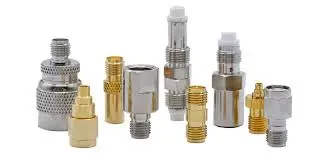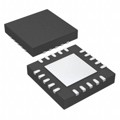Categories
- RF Accessories(2)
- 1
RF Accessories are a range of equipment and components used to enhance or improve the transmission and reception of radio frequency (RF) signals. These accessories include antennas, coaxial cables, RF connectors, signal amplifiers, attenuators, filters, and test instruments, among others. They play a crucial role in wireless communication, broadcasting, radar systems, and other fields that require high-frequency signal transmission.\

RF Accessories
RF (Radio Frequency) accessories refer to the range of components and tools used to support, enhance, or enable RF systems and applications. These accessories are crucial for ensuring optimal performance in wireless communication setups. Here’s a breakdown of common RF accessories and their purposes:
- Connectors: Essential for linking cables and devices, RF connectors (such as SMA, N-type, and BNC) ensure signal integrity by providing reliable connections with minimal signal loss.
- Cables: Coaxial cables are widely used for transmitting RF signals between devices with minimal attenuation. High-quality cables maintain signal strength over long distances.
- Attenuators: Devices that reduce the power level of an RF signal without distorting its waveform. They are useful for testing and calibrating equipment or protecting sensitive components from excessive power.
- Antennas: Key components that transmit or receive RF signals. Various types of antennas (e.g., dipole, parabolic, Yagi) are chosen based on the specific frequency range and application.
- Filters: Used to block unwanted frequencies and allow only specific frequency bands to pass through, helping reduce interference and improve signal clarity.
- Couplers and Splitters: These devices distribute or combine RF signals for applications where multiple paths are needed, such as distributing signals in antenna arrays or splitting signals for measurement.
- Amplifiers: Increase the power of RF signals to extend the communication range or boost signal strength in weak areas.
- Adapters: Facilitate connections between different types of connectors or systems, making various RF setups more flexible.
- Load Terminations: Absorb RF power without reflecting it, used to test or stabilize circuits by acting as a dummy load.
RF accessories are indispensable in industries such as telecommunications, broadcasting, radar, and wireless networking. They ensure the reliable transmission and reception of signals and play a vital role in the performance and maintenance of RF systems.








